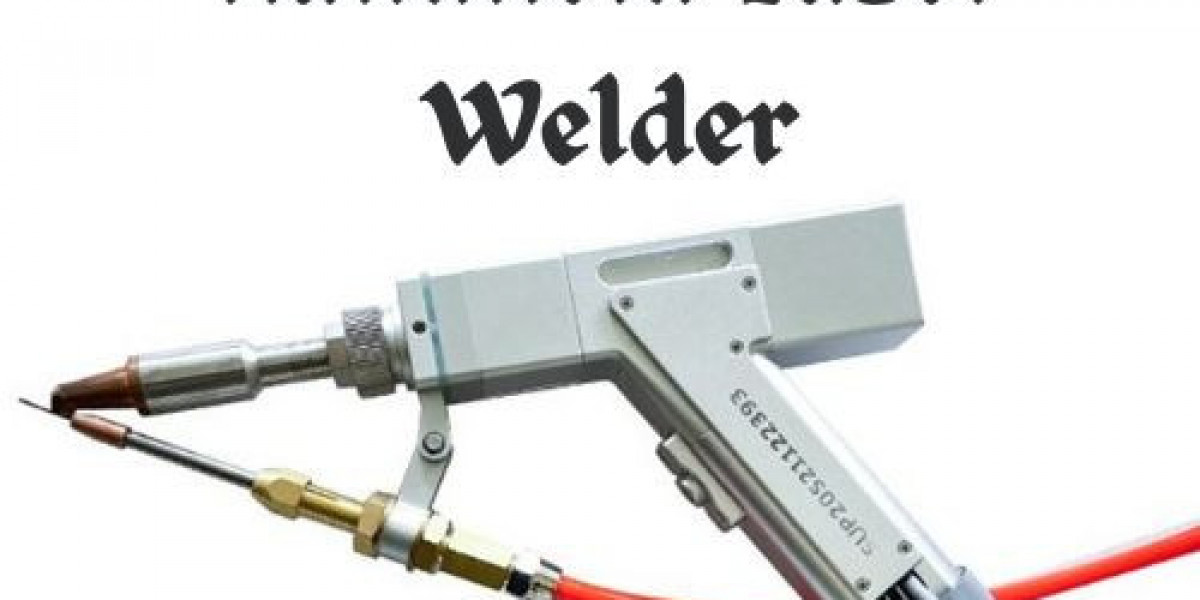A handheld laser welder is a compact, portable welding machine that uses laser technology to bond metals together. Unlike traditional welding techniques that involve heat-based methods like arc or MIG welding, laser welding uses highly concentrated beams of light, making it more efficient, precise, and versatile. The welder is designed to be held manually, offering a high degree of mobility and control, which is particularly valuable in tight spaces and intricate projects.
The laser welder's beam is directed to the target material, melting a small portion of it and then fusing it with the adjacent metal. The process allows for precise, clean welds with minimal distortion. This is particularly important in industries where the quality of the weld is crucial, such as in aerospace, electronics, and jewelry manufacturing.
Versatility and Precision in Applications
One of the primary reasons why handheld laser welders are becoming increasingly popular is their versatility in a wide range of applications. Whether you’re working with thin sheets of metal or more complex assemblies, a handheld laser welder is up to the task.
1. Automotive Industry
The automotive industry often requires precise and efficient welding techniques, especially for smaller parts, frames, and intricate components. A handheld laser welder can be used to repair and assemble various parts with precision, reducing the risk of errors and ensuring the structural integrity of the vehicle. The ability to weld in confined areas and the speed of the process makes it an invaluable tool for automotive manufacturers and repair shops.
2. Aerospace Industry
In aerospace, every component needs to meet exacting standards to ensure safety and performance. The precision offered by handheld laser welders allows aerospace engineers to weld parts with minimal heat distortion, which is crucial when working with lightweight and heat-sensitive materials like aluminum. The ability to weld without damaging the surrounding material is essential for maintaining the structural strength of critical aerospace components.
3. Jewelry and Fine Art
Handheld laser welders are also popular in the jewelry-making industry due to their precision and ability to work with delicate materials. Whether it's repairing intricate designs or creating detailed metalwork, the handheld laser welder ensures that the metal is fused without affecting the overall aesthetic or integrity of the piece. The precision laser beam allows jewelers to work with small components, such as gemstones, without causing damage.
4. Electronics Manufacturing
In the electronics industry, the need for precision welding is paramount. Handheld laser welders are ideal for joining small components like microchips and circuit boards. They offer the ability to make tiny, high-precision welds in tight spaces, which is crucial for producing high-quality electronic devices. Moreover, the low heat input reduces the risk of thermal damage to sensitive electronic parts.
5. Metal Fabrication and Repair
In the metal fabrication and repair industries, handheld laser welders excel in applications that require clean, strong welds. For instance, workers can use a handheld laser welder to repair and join stainless steel, copper, aluminum, and other metals without needing to clean up excessive spatter or debris. This helps reduce the time spent on post-welding cleanup and enhances the overall quality of the welded piece.
How Does a Handheld Laser Welder Improve Efficiency?
The use of a handheld laser welder can significantly improve the efficiency of metalworking processes in several key ways.
1. Speed and Precision
One of the main benefits of laser welding is the speed with which it can complete tasks. Traditional welding methods often involve long heating and cooling cycles, as well as post-weld cleaning and finishing. In contrast, handheld laser welding is much faster due to the high concentration of the laser beam, which quickly melts and bonds the materials. This speed can increase productivity in industries that require rapid turnaround times.
Precision is another factor that greatly enhances efficiency. The focused laser beam allows for pinpoint accuracy, minimizing the need for rework or adjustments. This is particularly important in industries that require tight tolerances, where even slight inaccuracies can result in product failure or additional costs. With a handheld laser welder, professionals can achieve consistent, high-quality results with minimal effort.
2. Portability and Flexibility
The portability of a handheld laser welder provides unmatched flexibility, particularly for jobs in the field or in small workshops. Traditional welding machines are often bulky and difficult to maneuver in tight or restricted spaces. However, the handheld design of laser welders allows operators to work in areas that might otherwise be challenging to access, such as small parts or intricate details. This mobility is especially beneficial in repair or maintenance tasks, where moving large machinery isn't feasible.
3. Minimal Heat Input
One of the key characteristics of laser welding is its ability to focus heat only on the immediate area of the weld. This minimizes the heat-affected zone, which can reduce the likelihood of warping, cracking, or distortion. The lower heat input also reduces the overall stress on the material being welded, which leads to stronger, more durable joints. This is particularly advantageous in industries like aerospace or automotive, where part integrity is critical.
4. Cost Efficiency
Although handheld laser welders can be more expensive initially compared to traditional welding machines, they can save money in the long run by reducing material waste and the need for costly repairs. Because laser welding is so precise, there is less chance of over-welding or under-welding, which can lead to material wastage. Additionally, the faster work cycles reduce labor costs, as tasks that once took hours may now be completed in minutes.
5. Cleaner Work Environment
Unlike conventional welding methods, which often produce spatter, smoke, and other by-products, laser welding is a clean process. There is little to no residual slag or debris left behind, and since the laser is highly concentrated, it doesn't generate much smoke or fumes. This creates a cleaner working environment, reducing the need for ventilation systems or additional cleaning equipment.
Final Thoughts
A handheld laser welder represents a transformative approach to metalworking, offering professionals the ability to perform high-precision welds quickly and efficiently. Whether you're in automotive, aerospace, jewelry, electronics, or metal fabrication, the versatility and precision of handheld laser welders can make a significant difference in your work quality and productivity.
With its ability to weld in tight spaces, provide cleaner results, and reduce heat distortion, a handheld laser welder is an invaluable tool that can streamline operations, improve the quality of work, and ultimately lower production costs. As industries continue to evolve, the demand for precise, efficient, and mobile welding solutions like handheld laser welders will undoubtedly grow, solidifying their place as a game-changing tool in the modern manufacturing landscape.









